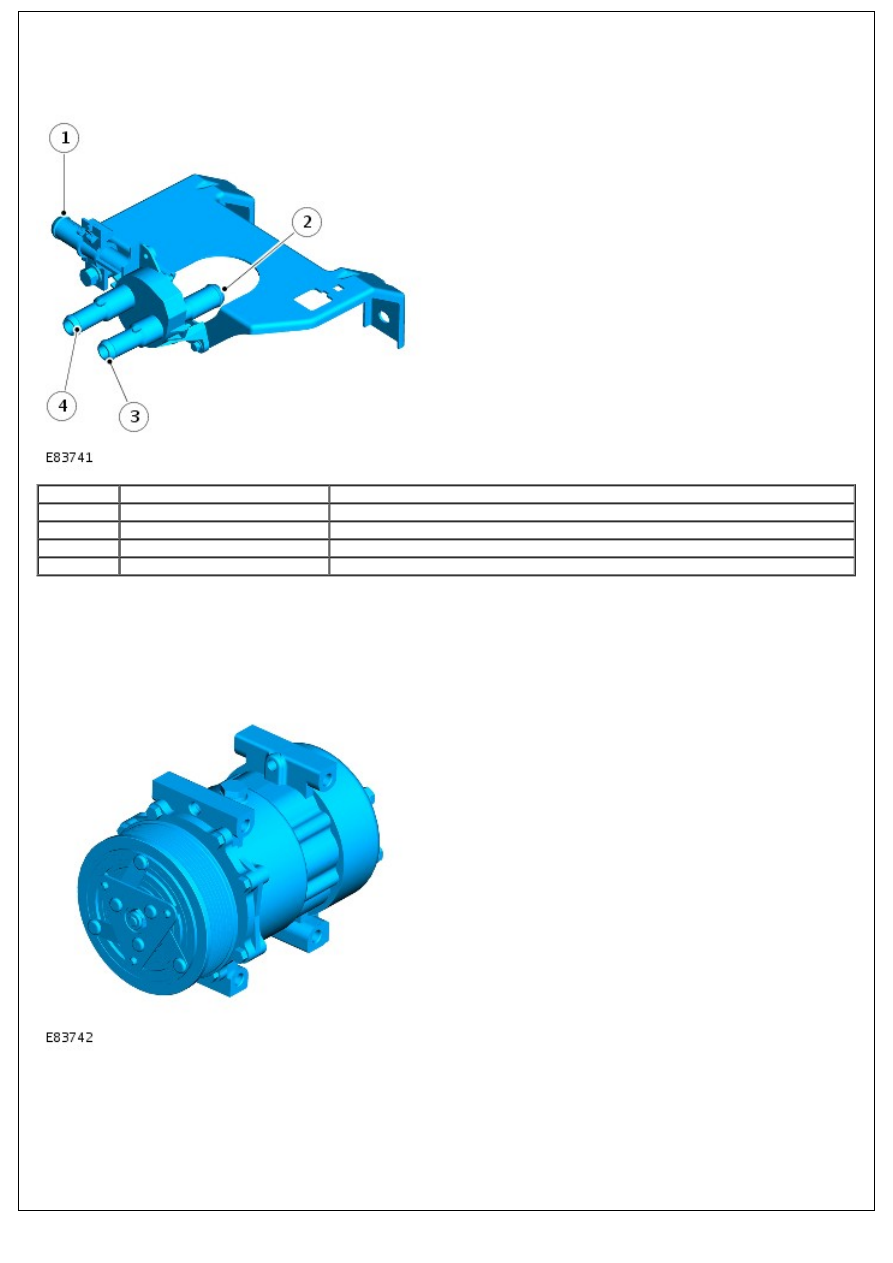Defender. Manual - part 201

Air distribution into the cabin is controlled by 2 air distribution doors. The doors are operated via a Bowden cable from
the RH rotary control on the center console.
WATER VALVE
Item
Part Number
Description
1
-
Return from heater matrix
2
-
Supply to heater matrix
3
-
Supply from engine cooling system
4
-
Return to engine cooling system
The water valve is mounted at the rear of the engine compartment. A Bowden cable acts on a lever on the rear face of
the water valve to vary the flow of hot engine coolant into the heater matrix. When the water valve is fully closed, no
engine coolant is allowed to flow into the heater matrix. In this instance, engine coolant will flow into the water valve
through inlet (3) and immediately out through the return (4).
AIR CONDITIONING COMPRESSOR
The A/C compressor circulates refrigerant around the system by compressing low pressure, low temperature vapor from
the evaporator and discharging the resultant high pressure, high temperature vapor to the condenser.
The A/C compressor is a constant displacement unit which is driven by the engine accessory drive belt. To protect the
system from excessive pressure, a pressure relief valve is installed in the outlet side of the A/C compressor. The
pressure relief valve vents excess pressure into the engine compartment.
Compressor clutch engagement is controlled by the ECM. The ECM receives system pressure inputs from the refrigerant
pressure switch and system temperature inputs from the thermostatic switch. The ECM will de-energize the A/C